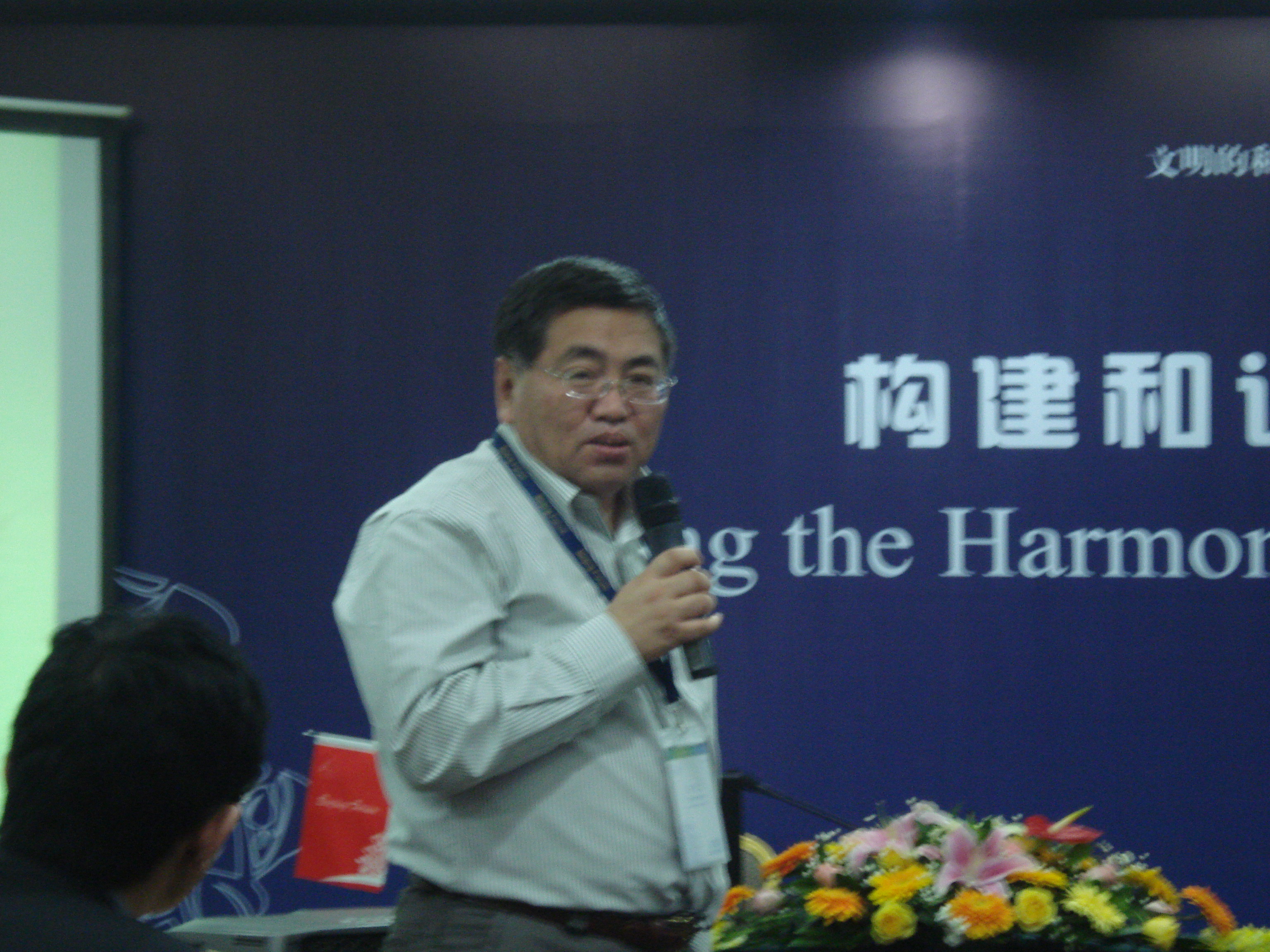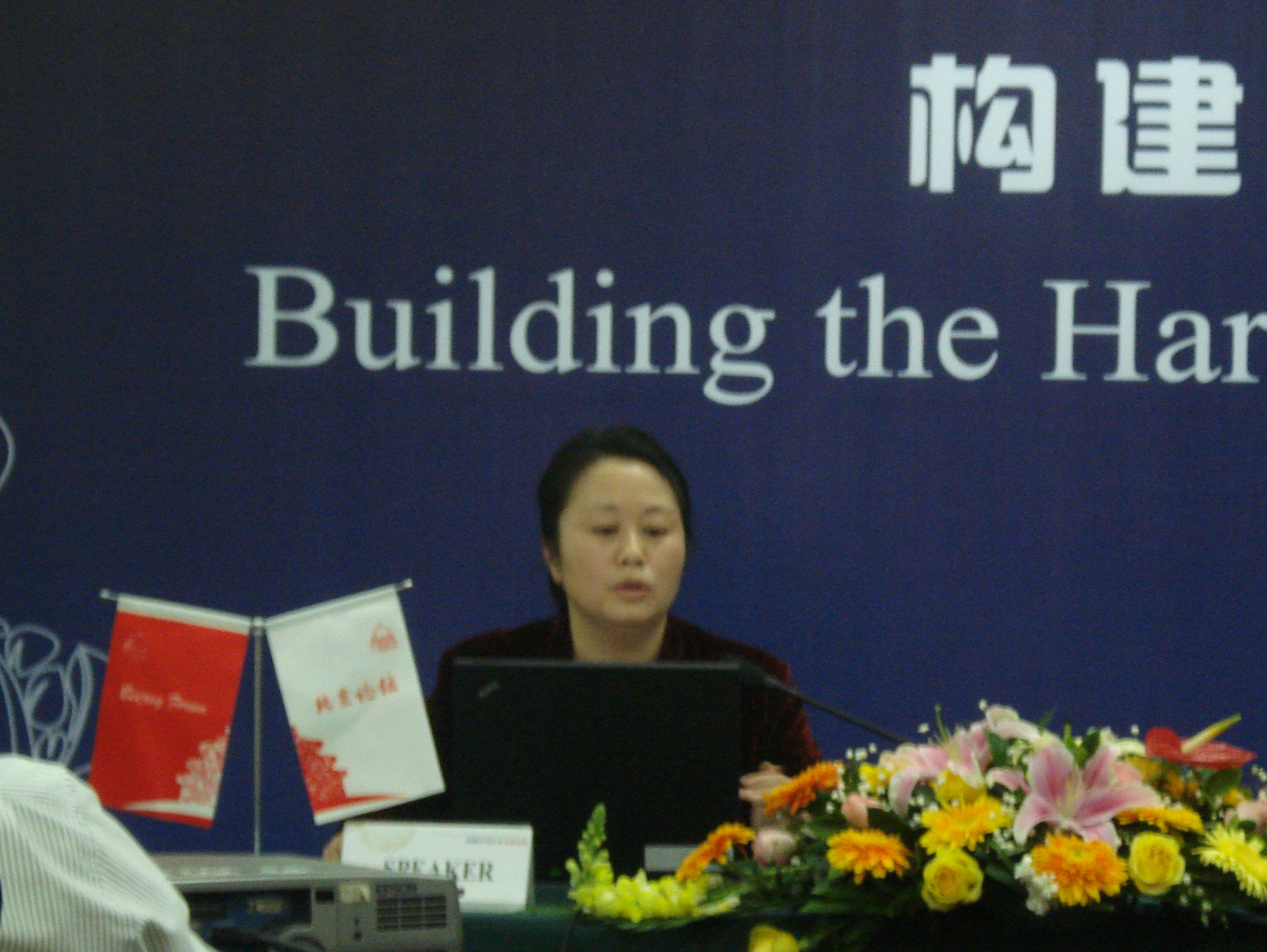Peking University, Nov. 6, 2010: On the afternoon of Nov. 6, the panel session of “Building the Harmonious World City” entered the third quarter. At PKU Yingjie Overseas Exchange Center, scholars made profound discussions about the evaluation standards of world cities. Professor Kiyoshi Kobayashi from Kyoto University, and Professor Gu Chaolin from Tsinghua University, co-chaired the panel session.
Professor Lü Bin, Director of Department of Urban and Regional Planning, Peking University, laid stress on the diversity of world cities. In his eyes, their basic characteristics were no more than headquarters of transnational enterprises, abundant international investments, and complete industrial systems. According to his suggestions, Beijing should not copy the models of New York or London, for China implemented a unique social system – where the government played a fairly dominant role. Therefore, more attention should be paid to building a world city with Chinese characteristics.
Professor Eggarin Anukulyudhathon from Kasetsart University, Thailand, shared the case of Bangkok with the audience. He has witnessed many urban problems, especially the deteriorations of natural resources and local cultures along with the city’s economic developments. He appealed to everyone’s consciousness as regards the protection of nature, in order to ensure the quality of life and environment.
Professor Wang Guixin from Fudan University quoted the latest overall ranking list of world cities to show the gap between Shanghai and the top metropolises around the world. Additionally as he pointed out, Shanghai had fallen behind in the economic growth rate, in spite of its current advantageous position on the mainland. Hence, he advised the municipal government to promote globalization, reinforce talent management, and encourage innovations.

Prof. Wang Guixin Answering Questions
Professor Manas Chatterji from Binghamton University talked about the relationships among regional planning, national developments, and conflict resolutions. He doubted whether a national plan could actually take into account the best possible strategies for regional developments in their broad framework. Also, he expected more efficient solutions to social conflicts through inter-regional cooperation, as well as more developmental potentialities of respective regions.
After the coffee break, Professor Sun Jiuwen from Renmin University of China analyzed the regional imbalance of industrialization in China. Based on his textual research, the eastern regions’ advantage of labor cost had been overtaken by the central and western regions, which seemed inconsistent with the traditional theory of international industrial transfers.
Professor Kathy Pain from University of Reading, UK, attributed the mighty power of world cities to their inter-city relations. Repeatedly as she found, network practices were creating a huge space for transnational city flows within and between agglomerations, leading to an intense competition among city authorities simultaneously.
The last speaker, Professor Duan Xia from the Capital University of Economics and Business, introduced the evaluation system of world cities in the post-industrialization era, together with their various appearances at other stages of development. To exemplify the system, she reviewed Beijing’s modern history and mapped out its future prospect.

Prof. Duan Xia at Her Speech
During the Q&A section, the speakers accounted further for their thoughts, while other scholars came up with more evaluation methods of world cities.
Reported by: Jin Ludi
Edited by: Zhang Chunlan